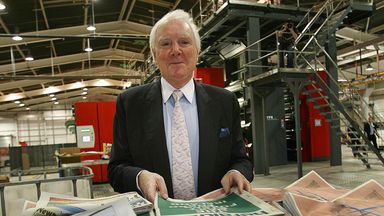Help to Buy Isas have closed to new savers, but if you were quick enough to grab one of the government-backed savings products before they were scrapped in 2019 it can be a great way to build a deposit tax-free for your first home.
The Help to Buy Isa was once the Government’s flagship savings scheme as part of efforts to help people get on the property ladder.
The idea is that someone saving for their first home can put some of their Isa allowance specifically towards a deposit for a mortgage. The Government even pays a 25pc bonus on what you’ve saved once you are ready to use the funds to purchase a property as a nice little reward.
It has since been replaced by the Lifetime Isa (Lisa), but savers who already have one can still make use of its perks.
Here, Telegraph Money explains how to use the Help to Buy Isa to buy your first home, and whether you should consider switching it for a Lisa instead.
What is a Help to Buy Isa?
High house prices, especially compared with wages, mean coming up with a mortgage deposit can be one of the main barriers to getting on the property ladder. The Help to Buy Isa aimed to address this when it was launched in December 2015.
Savers can use some of their Isa allowance to put up to £200 a month into a tax-free cash savings account. You earn interest on the money, plus the Government will top up your savings by 25pc, up to a maximum of £3,000, when you buy your first home.
That means the maximum savings that the Government will pay a bonus on is £12,000, but you could still save more to get the tax-free benefits and interest.
There are extra benefits if purchasing with another first-time buyer, as the Government pays the bonus on each account rather than a property.
So if a couple each managed to save £12,000 into their own Help to Buy Isa, both accounts would be boosted to £15,000 and they would have a total of £30,000 towards a deposit.
Can I still open a Help to Buy Isa?
The Help to Buy Isa was closed to new users in November 2019, following the launch of the Lifetime Isa in April 2017.
Existing customers can still contribute until November 2029 and must claim the 25pc government bonus by 1 December 2030.
That may seem a long way away, but it would take five years to save £12,000 based on a £200 monthly contribution – so if you want to reach this target and haven’t saved much yet, you’ll need to start soon.
Claiming the government bonus
Getting your hands on the government bonus can be a bit complex.
Unlike with a Lisa – where the bonus is usually paid into the account a few weeks after you make a deposit – claiming the bonus for a Help to Buy Isa is part of the legal process of purchasing a property.
Technically, you will never “see” this money, as it needs to be handled by a conveyancer who is eligible under the Isa scheme rules – you’ll need to check if your lawyer is able to help.
You’ll need to let your provider know when you are intending to use the balance to buy your first home, and you will need a closing statement from them. The conveyancer uses this to apply for your bonus.
Using the Help to Buy Isa for purchasing a property
The Government hasn’t made it easy when it comes to the type of property you can put the Help to Buy Isa money towards.
The money can only be used for purchases worth up to £250,000 outside of London and £450,000 in the capital for a home you will live in.
These restrictions haven’t been increased since the Help to Buy Isa was first launched nine years ago, meaning it can be tricky if you want to live in an expensive area where house prices are rising.
There was some controversy in the early days as it emerged that the money can only be used as a deposit paid towards the mortgage.
Since the government bonus is only paid to the conveyancer just prior to completion, it means the money doesn’t help with the deposit you pay once you exchange contracts, typically around 10pc, to show your legally binding commitment to the transaction.
As such, you’ll need to have this other deposit sum in a separate account that can be released earlier in the buying process.
Help to buy Isa vs lifetime Isa
The Help to Buy Isa has been replaced as the flagship government-backed savings product by the lifetime Isa. Launched in 2017, it is a bit more flexible than the Help to Buy equivalent as it can be used as a cash Isa to get a fixed return, or you can aim for higher investment growth with a stocks-and-shares lifetime Isa.
Additionally, the money can be put towards your exchange deposit, rather than waiting for completion of the purchase. Contribution limits are also higher, at up to £4,000 per year.
But Lisas come with their own set of quirks. While you could open a Help to Buy Isa from age 16, you need to be 18 for the Lisa, and you’re unable to open once you pass the age of 40.
Similarly to the Help to Buy Isa, Lisas include a 25pc government bonus worth up to £1,000 per year. So if you save £4,000 annually, that will be topped up to £5,000 – plus any interest or investment growth, which will all be tax-free.
You can also double up your lifetime Isa savings if you buy a home with another first-time buyer.
There are a couple of stings in the tail, though. Once you turn 50, you can’t contribute anymore money or receive the bonus but can still get interest or investment returns. Granted, the number of first-time buyers past this age are few, and are therefore more likely to be saving for retirement. Additionally, there is a 25pc withdrawal charge if you access the funds for reasons other than buying your first home; to go towards your retirement if over age 60; or if you are terminally ill with less than 12 months to live.
To use the Lisa money for a property purchase, its value can only be up to £450,000 and in the UK, you have to be using mortgage finance and you need to wait at least 12 months after you make your first payment into the Lisa.
Closing a Help to Buy Isa
If you’re intending to use your Help to Buy Isa to buy your first home you need to apply to your provider when you are ready so you can finally get on the property ladder.
Once a Help to Buy Isa is closed savers have 12 months to claim the bonus, which should help even the slowest of solicitors.
Your conveyancer will need to apply for the bonus ahead of the completion date and use it as part of the funds provided when the purchase completes. This is extra work so don’t be surprised if your conveyancer charges a small administration fee.
Alternatively, if you no longer wish to use this account to buy a property – perhaps you also have a Lisa (if you do, you’ll only receive the government bonus for one of the accounts, not both) – you might want to transfer your savings elsewhere to maximise your returns.
Some Lisa providers will accept transfers in from other types of Isas (but you’ll need to check your provider’s terms), meaning the money can still earn a government bonus and go towards the purchase of your first home. Note the transfer will be restricted by the £4,000 annual limit.
Alternatively, you could transfer the money to a different type of Isa.
Note that if you simply withdraw the money to your bank account it will lose its tax-free status and, if you later pay it into a different Isa it will count towards the use of your Isa allowance for that tax year.
Disclaimer: The copyright of this article belongs to the original author. Reposting this article is solely for the purpose of information dissemination and does not constitute any investment advice. If there is any infringement, please contact us immediately. We will make corrections or deletions as necessary. Thank you.



